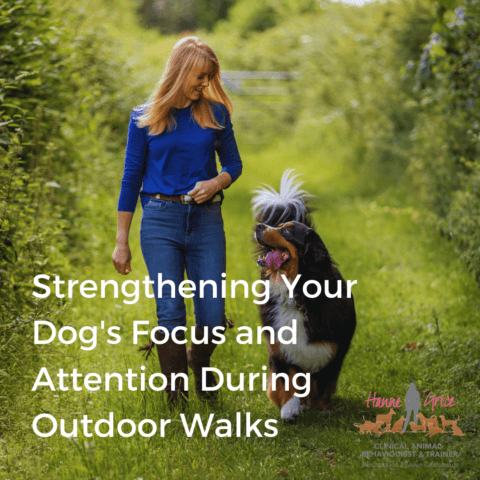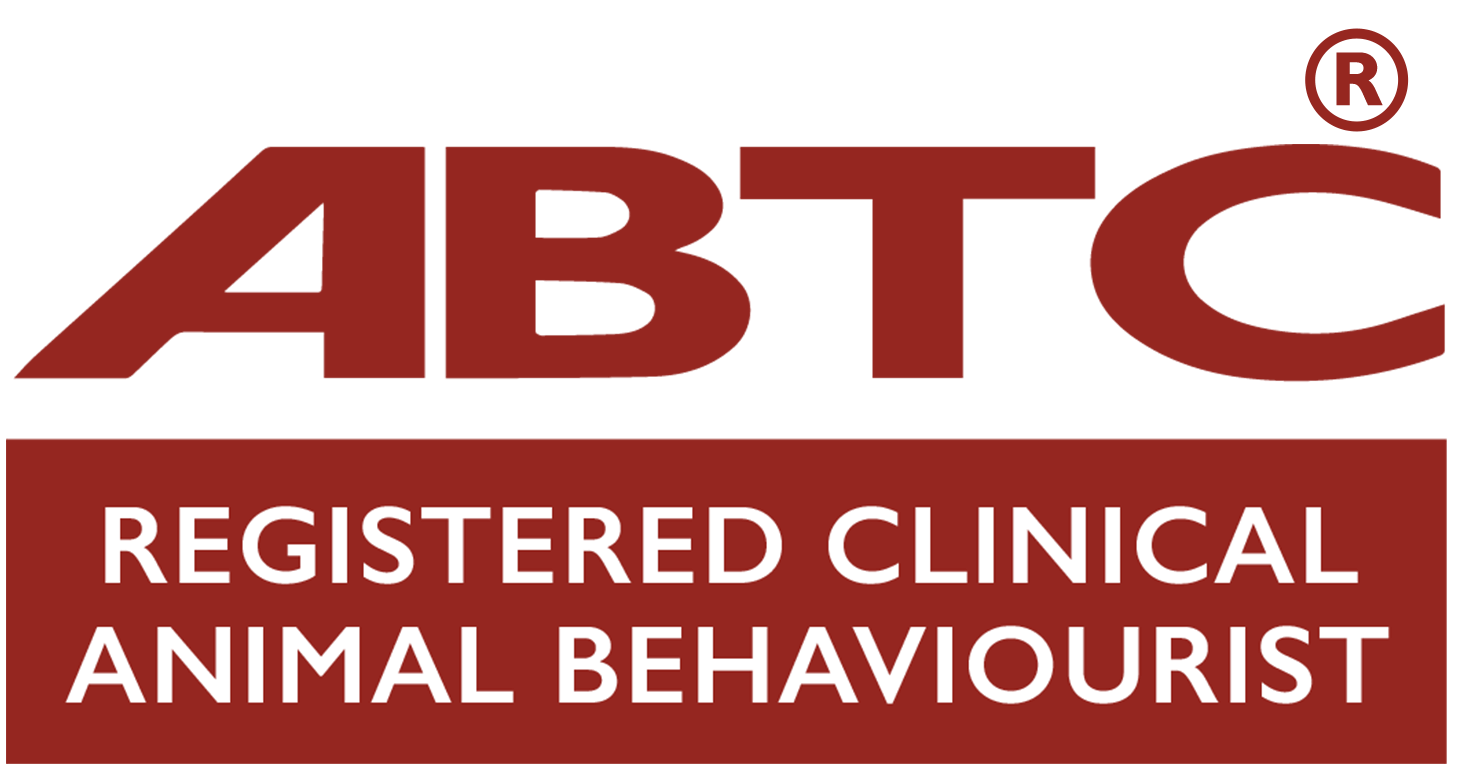Walking your dog can be a rewarding experience; after all, most of us get a dog to enjoy the Great Outdoors together. However, as soon as you step outside, the environment can present challenges when it comes to maintaining your dog’s focus and attention. Distractions abound, from other dogs and wildlife to enticing scents and scary sounds, making it difficult for your furry friend to stay focused on you. However, with some effective strategies and training techniques, you can improve your dog’s focus and attention during outdoor walks, enhancing your bond and ensuring a safer and more enjoyable experience for both of you.
- Basic training to achieve solid foundations:
Building a solid foundation of key life skills through training from the get-go is crucial for improving your dog’s focus and attention. Teach your dog essential behaviours that include sit, stay, leave, staying close to you/walking on a loose lead, and recall. These behaviours need to be taught in a controlled, low-distraction environment first so your dog can ‘get’ the behaviour (e.g., your kitchen when no one is around and it is quiet). Once your dog has mastered these behaviours indoors (in all rooms they are allowed), and in garden, aim to gradually introduce these behaviours during quiet walks away from others – this is important in order to help your dog ‘win’ at performing the behaviours in other contexts. When your dog is doing well and performing these behaviours around 80+% of the time at the level of challenge you have been practicing at, then progress to gradually increasing the level of distractions, such as walking at a slightly busier time of day, or moving a little closer to a distraction and so on. If the behaviours start to fall apart then this indicates the progress was likely rushed, for example, we may have been too close to a distraction, exposed the dog for too long to the distraction, not had high value rewards as perceived by our dog to gain their interest and motivation, and/or we may have been training the dog for too long etc. Go back a few steps in the process to where your dog was able to perform the desired behaviour[s], and then move slower with the additions of distractions, or getting closer and so on. Check out my Puppy Package for a one-stop-shop of support for teaching your dog awesome foundations for a range of behaviours and more via my Learning Hub.

- Use positive reinforcement:
Positive reinforcement is a powerful tool for training and improving focus. Reward your dog with what your dog finds reinforcing – this may include a variety of food treats your dog enjoys, verbal praise, the opportunity to sniff and play whenever they exhibit the desired behaviour of maintaining focus on you during walks. Positive reinforcement helps create a positive association with paying attention to you, making it more likely that your dog will repeat the behaviour in the future. Stay away from outdated methods that include shouting/yelling at your dog, manhandling or more – this is a sure fire way to fracture that all important dog-owner bond and can lead to other issues such as anxiety-related problems and more.
- Engage in interactive play:
Before embarking on a walk, engage your dog in a quick game of interactive play to help channel their energy and provide mental stimulation. A game of fetch, tug-of-war, puzzle toys or setting up a scent work area (e.g., ACE freework) can help get rid of some excess energy a little while before you even think about heading outside to practice behaviours such as loose lead. This can help make your practice sessions more focused and keep them short to help maintain motivation. Consider also having a ‘special’ toy for walks only – I love using a tail teaser for this, and especially for dogs that love to chase, as it means I can reward a great recall or attention with a playful game of chase and tug, where I have my dog’s full attention and are enabling that all important chase onto something appropiate whilst outdoors. And this leads more onto…
- Use high-value rewards:
Using high-value treats and rewards can be a game-changer when it comes to capturing and maintaining your dog’s attention. Find food and toy rewards that your dog absolutely loves and reserve them exclusively for outdoor walks. The special treats will serve as a powerful motivator for your dog to focus on you and respond to your cues – and ensure you have a variety to help gain and keep your dog’s motivation. Conduct a preference test to understand what your dog enjoys more when given a choice, this can include natural behaviours like sniffing, chasing, digging/foraging, outside of food treats etc. Conduct the test in different environments too, as your dog’s reward preferences are likely to change when they are in different places. Check out my video on how to perform a preference test.
- Practice exercises that hone your dog’s patience:
Training your dog to exercise patience (display some impulse control) can significantly improve their focus and attention. Teach them to wait patiently at home, then the garden and progress to practicing when out and about. Practice with your dog on the lead, progressing to a long line, then in secure and safe areas work off-lead. Make it playful by asking for a wait, and then rewarding them with something they really love like the chance to “go sniff” or “go play” and so on. Adding in some wait requests whilst on a walk can help with gaining their attention onto you during walks. Practice in short bursts during the day (e.g., during advert breaks, when the kettle is boiling or you’re waiting for your toast to pop-up). Such repetition helps to create new positive habits, and the reward your dog receives for performing these desired behaviours across short practice sessions, builds up your pet’s ‘bank account’ for these wanted behaviours, and maintains their enthusiasm. Other behaviours that are helpful for building your dog’s patience includes but not limited to stay, a send-away (e.g., go to a place), leave, drop, asking for eye contact (e.g., “watch”) and so on.
- Gradual exposure to distractions:
My favourite saying to clients is “Slowly, slowly, catchy monkey” – this is to help them to remember the importance of gradually exposing the dog to various distractions that are typically encountered during walks, such as other dogs, children, cyclists, joggers etc., very slowly. Start with low level distractions. As described previously, only progress onto mild distractions when your dog is able to perform the desired behaviours 80+% of the time when asked. Always reward your dog for maintaining focus on you – one of the fastest ways to lower motivation is to fade out reinforcement too soon, when owners think they have taught the dog behaviour but the behaviour is not well-generalised. As your dog becomes more comfortable, gradually increase the level of distractions. Be prepared to bend and flex as behaviour change isn’t a linear process! Instead, by using this gradual exposure approach, it helps you build your dog’s confidence and resilience, allowing them to maintain focus despite external stimuli. Keep practice sessions short and sweet – and if your dog offers any great behaviours unprompted by you, rain down those rewards like they’ve just won the lottery to capture those moments of brilliance and increase the likelihood of those behaviours being performed again!
- Seek professional training and behaviour support:
If you’re struggling to improve your dog’s focus and attention on your own, consider seeking the guidance of a professional dog trainer to hone your dog’s recall and other behaviours needed for the Great Outdoors. However, if your dog is struggling around other dogs, people, traffic, other animals and so on, then you will need the support of a certified Clinical Animal Behaviourist or Veterinary Behaviourist. Practitioners can assess your dog’s specific needs and develop a personalised training and/or behaviour modification plan to address issues. Check out the Animal Behaviour and Training Council (ABTC) website for a list of assured and certified practitioners that use humane and ethical handling methods.
Improving your dog’s focus and attention during outdoor walks requires practice, lots of patience, consistency, and positive reinforcement. By implementing and building solid training foundations, using positive reinforcement methods, engaging in interactive play, and gradually exposing your dog to distractions at their pace, you can strengthen your dog’s focus and attention. Remember, each dog is unique, and the process may vary, so do seek professional guidance to help you overcome any specific challenges you encounter. With time and effort, you and your dog will enjoy more focused and enjoyable walks together.
References:
- McConnell, P. (2002). The other end of the leash: Why we do what we do around dogs.
- Yin, S. (2006). How to behave so your dog behaves.
Learn more about our classes

Get Hanne's Book
Playing With Your Dog will help any dog owner work out the games that are best suited for their pet to play throughout his life, from puppyhood to old age. The book also shares some tricks for all ages, group activities, and recommended toys that dogs will enjoy.

























